Introduction to Fast Website Design and Its Importance
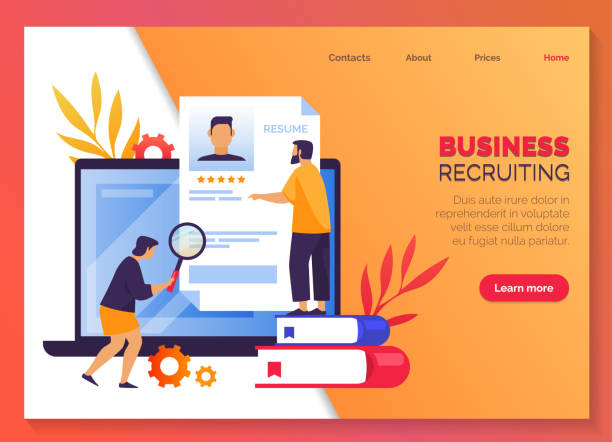
In today’s digital world, fast website design is no longer a luxury option, but a vital necessity.
Internet users have high expectations for page loading speed, and if a website doesn’t load within a few seconds, they will easily leave it and go to competitors.
This concept, namely #website_speed_optimization or #fast_website, refers to a set of actions that ensure web pages are displayed with the least possible delay.
The importance of this issue not only relates to user experience (UX) but also plays a significant role in SEO and website ranking in search engines.
Google and other search engines consider site speed as an important ranking factor.
From an educational perspective, understanding this fundamental principle is essential for any business planning a successful online presence.
A slow website can lead to the loss of potential customers, reduced conversion rates, and ultimately, financial loss.
Therefore, paying attention to fast website design is an investment in the future of your business.
This section will help you gain a comprehensive understanding of the importance of this topic and why you should prioritize it.
We will continue to discuss the various aspects of this challenge and its solutions.
High website speed not only keeps visitors satisfied but also adds credibility to your brand and demonstrates your professionalism.
Do you know that a poor corporate website loses you many opportunities daily? Solve this problem forever with professional corporate website design by Rasaweb!
✅ Create a powerful and reliable image for your brand
✅ Targeted attraction of new customers and increased sales
⚡ [Get Free Website Design Consultation]
Key Factors in Website Speed

To achieve a fast website design, understanding the factors affecting page loading speed is crucial.
These factors include a set of technical and content elements, each of which can individually or together impact the overall performance of the website.
The first and perhaps most important factor is the quality of hosting or web hosting.
A slow server or one with insufficient resources cannot provide the expected speed, even with the most optimized coding.
Therefore, choosing a powerful and reputable hosting is the first step in this path.
The second factor is optimizing images and multimedia files.
High-volume images can severely reduce loading speed.
Using appropriate formats (such as WebP), compressing images without noticeable quality loss, and Lazy Loading are effective solutions in this regard.
The third factor is code optimization (HTML, CSS, JavaScript).
Cleaning up unnecessary code, minification, and concatenation of files help reduce the overall size of the website.
Also, using Caching is a specialized solution for storing a version of web pages in the user’s browser, so that subsequent visits load faster.
All these factors are aimed at achieving a high-performance website and a desirable user experience.
Understanding and correctly implementing these tips form the foundation of a fast and successful website design.
Tools and Techniques for Speed Optimization
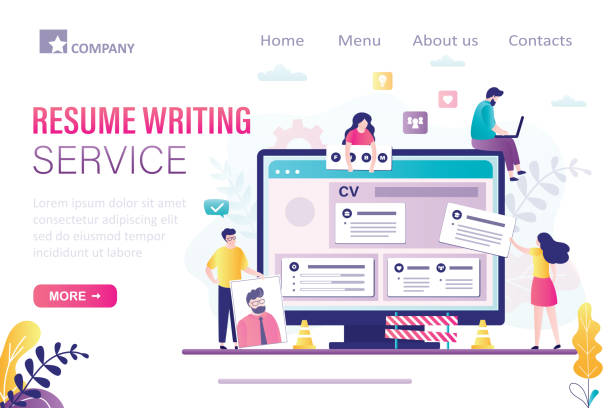
To turn fast website design into a reality, we need effective tools and techniques that help us identify weaknesses and implement improvements.
Well-known tools for website speed analysis include Google PageSpeed Insights and GTmetrix.
These tools provide valuable guidance for improving site performance by offering scores and specific suggestions.
For example, PageSpeed Insights provides scores for Core Web Vitals (including Largest Contentful Paint, First Input Delay, Cumulative Layout Shift), which are important factors in SEO and user experience.
Optimization techniques include several items:
- Database optimization: Cleaning extra tables, optimizing queries.
- Using a Content Delivery Network (CDN): Stores content on servers closer to users to increase access speed.
- Conditional loading of scripts: Loading JavaScript asynchronously (async) or deferred to prevent page rendering from being blocked.
- Eliminating render-blocking CSS and JS: Moving CSS codes to the top of the page and JS to the end of the page.
These techniques are part of an educational and specialized approach to achieving fast website design.
Their implementation requires technical knowledge but will lead to significant results in increasing user satisfaction and improving SEO ranking.
| Tool Name | Features | Ease of Use | Level of Detail |
|---|---|---|---|
| Google PageSpeed Insights | Core Web Vitals scoring, Google suggestions, mobile and desktop | Medium | Medium to High |
| GTmetrix | Waterfall chart, complete loading timeline, loading video | High | High |
| Pingdom Tools | Response time monitoring, testing from various geographical locations | High | Medium |
Paying attention to the suggestions of these tools and precisely implementing the mentioned techniques will be effective steps towards optimizing speed and enhancing your fast website design.
Impact of Site Speed on User Experience and SEO

One of the most important reasons why fast website design has received so much attention is its direct impact on User Experience (UX) and Search Engine Optimization (SEO).
From a user experience perspective, today’s users are more impatient than ever.
Studies show that even a one-second delay in page loading can significantly increase the bounce rate.
When a user waits for a page to load, they become frustrated and are likely to leave the site.
This not only means losing a visitor but can also damage your brand’s reputation.
A high-speed website means greater user satisfaction, increased time spent on the site, more page views, and ultimately, higher conversion rates.
On the other hand, the impact of site speed on SEO is undeniable.
Google has repeatedly stated that page loading speed is a ranking factor, especially with the introduction of Core Web Vitals.
These metrics include LCP (Largest Contentful Paint), FID (First Input Delay), and CLS (Cumulative Layout Shift), which are directly related to the speed and visual stability of the site.
Websites that perform poorly on these metrics may experience a drop in search results ranking.
Therefore, fast website design not only means a better user experience but is also a crucial analytical and explanatory strategy for achieving higher rankings in Google and attracting more organic traffic.
A slow website overshadows all your efforts for content marketing and SEO.
Are you bothered by losing customers due to your e-commerce site’s outdated appearance or slow speed? Rasaweb’s expert team solves these problems with professional e-commerce website design!
✅ Increase customer trust and brand credibility
✅ Stunning speed and excellent user experience
Get free e-commerce website design consultation from Rasaweb now ⚡
Common Mistakes in Website Design and Its Slowness

On the path to fast website design, many developers and website owners make mistakes that unintentionally lead to slow performance.
Understanding and avoiding these mistakes is an important part of the guidance for achieving optimal speed.
One of the most common mistakes is using high-volume images without optimization.
Sometimes, a large image placed on a website without compression can alone be several megabytes in size and drastically slow down page loading.
It is questionable why this mistake is still repeated despite numerous image optimization tools?
Another mistake is overloading with unnecessary plugins and scripts.
Every additional plugin or script adds to server resources and page loading time.
Many websites use plugins where only a small portion of their functionalities is needed.
Inefficient coding and the use of heavy frameworks can also lead to website slowness.
Developers who do not pay attention to fast website design might use unnecessary and redundant CSS and JavaScript codes, which increases the overall page size.
Also, not using caching and CDN, or their incorrect configuration, can significantly impact speed.
Choosing unsuitable hosting and not regularly maintaining the database are other factors that can cause site slowness.
By avoiding these common mistakes, website speed can be significantly improved, and a better user experience can be provided.
The Role of Hosting and CDN in Loading Speed
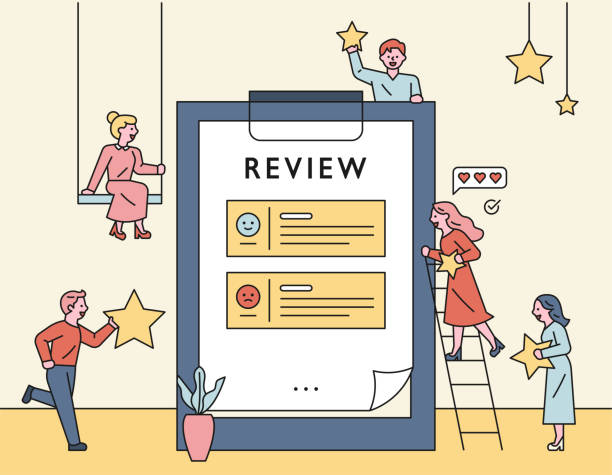
One of the main pillars in achieving fast website design is the hosting and content distribution infrastructure.
Web Hosting is essentially where your website files are stored on servers, and when a user enters your site’s address, these files are loaded from the server.
The quality of hosting directly affects Server Response Time.
Cheap shared hosting that divides server resources among a large number of websites usually performs poorly.
To achieve optimal loading speed, using VPS hosts, Cloud Hosting, or dedicated servers is recommended, as they provide more resources for your website.
Alongside hosting, a Content Delivery Network (CDN) plays a complementary role.
A CDN is a system of distributed servers in various geographical locations that store cached versions of your website’s static content (such as images, CSS, and JavaScript).
When a user from a specific region visits your site, the content is served to them from the closest CDN server, which significantly reduces loading time.
For a fast website design on a global scale, a CDN is essential.
This system, especially for websites with high traffic or international audiences, is a specialized and effective solution for increasing loading speed and reducing the load on the main server.
Simultaneous use of quality hosting and a powerful CDN will guarantee high speed for your website.
Case Study and Best Practices for Speed Improvement
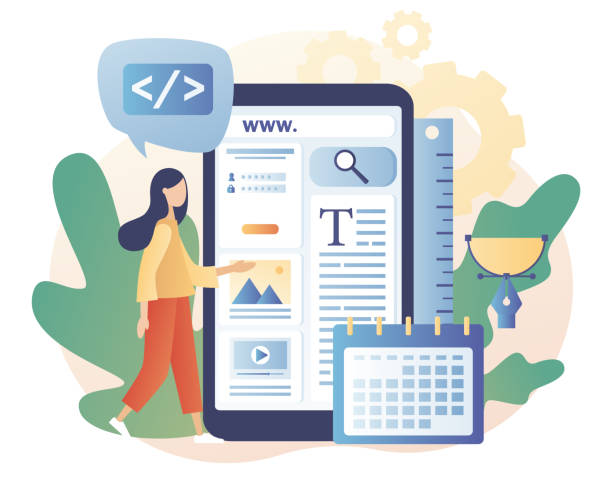
To better understand how to achieve fast website design, reviewing case studies and practical best practices can be highly educational and analytical.
Many large and small companies have managed to significantly increase their website speed through targeted optimizations and benefit from its advantages.
For example, an e-commerce platform, after implementing Lazy Loading for images and videos, and also using a CDN, succeeded in reducing its homepage loading time from 4 seconds to less than 1.5 seconds.
This optimization led to a 15% increase in conversion rate and a 20% decrease in bounce rate.
The best practices for increasing website speed are as follows:
- Server-side optimization: Including appropriate hosting selection, using the latest PHP version, GZIP compression, and correct server configurations.
- Database optimization: Regular cleaning, proper indexing, and query optimization.
- Image optimization: Compression, optimal resizing, using modern formats (WebP), and Lazy Loading.
- Code optimization: Minification and Concatenation of CSS and JS files, eliminating render-blocking codes.
- Implementing caching: Using caching plugins (for CMSs) or server-side cache configuration to increase page reload speed.
- Using a CDN: Essential for sites with global audiences or high traffic.
- Addressing Core Web Vitals: Focusing on improving Google’s metrics for user experience.
These guidelines and news examples show that with a systematic approach, extraordinary loading speed can be achieved.
| Metric | Before Optimization | After Optimization | Result |
|---|---|---|---|
| Page Load Time (seconds) | 4.5 | 1.2 | 73% Reduction |
| Bounce Rate (%) | 55 | 35 | 20% Reduction |
| Conversion Rate (%) | 2.5 | 3.2 | 0.7% Absolute Increase |
| LCP (seconds) | 3.8 | 0.9 | Excellent |
This table is an example of the achievable results after correctly implementing fast website design strategies.
Site Security and Speed: Essential Integration

When it comes to fast website design, less attention is often paid to security, while these two concepts are strongly intertwined.
A secure website is not necessarily slow, and a fast website should not sacrifice security.
In fact, balancing security and speed is a specialized challenge that requires intelligent solutions.
Some security measures, such as using Web Application Firewalls (WAFs) or continuous malware scans, can marginally affect loading speed.
However, this impact is negligible compared to the damages caused by a cyber-attack.
On the other hand, a slow website can indirectly affect security.
For example, software updates, which often include security patches, may be delayed due to slowness or lack of attention, making the site vulnerable to exploits.
Also, Denial of Service (DoS) attacks or Distributed Denial of Service (DDoS) attacks, which are carried out with the aim of disabling a website, directly affect the site’s speed and availability.
The solution in this area is to use optimal and efficient security solutions that have minimal impact on performance, such as using the HTTPS protocol with a valid and optimized SSL/TLS certificate, or implementing firewalls and intrusion detection systems designed for minimal impact on speed.
Finally, to achieve fast and secure website design, both aspects must be considered analytically and simultaneously.
A website that is both fast and secure will gain user trust and be safe from any potential dangers.
This dual approach is part of a comprehensive guide for modern website management.
Is your e-commerce site ready to attract maximum customers and increase sales? Rasaweb transforms your online business with modern and efficient e-commerce website designs.
✅ Increased speed and improved SEO
✅ Excellent user experience on mobile and desktop⚡ Get free e-commerce website design consultation from Rasaweb now!
The Future of Website Design and Speed Trends
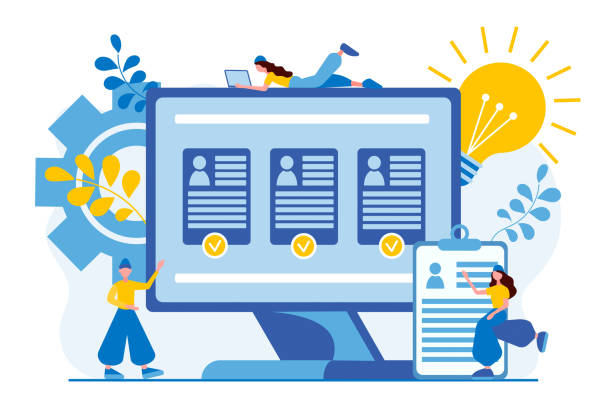
The future of fast website design is full of innovations and new trends aimed at providing an unparalleled experience for users.
With technological advancements, expectations for speed are also increasing.
One of the most important upcoming trends is the growing focus on Mobile-First and optimization for mobile devices.
Given that a significant portion of internet traffic comes from mobile, websites must be designed from the outset for fast display and performance on mobile.
Another trend is the development and wider use of Progressive Web Apps (PWAs).
PWAs offer a combination of the best features of web and mobile applications; they are fast, reliable, and installable on the phone’s home screen, even working offline and providing an experience close to native applications.
This technology opens new horizons for loading speed and user interaction.
Also, the use of Artificial Intelligence (AI) and Machine Learning (ML) in speed optimization is expanding.
These technologies can automatically apply optimizations by analyzing user behavior and site content, such as selecting the best caching method or preloading anticipated content.
The thought-provoking content in this area is whether we will ever reach a point where the need for manual speed optimization is minimized?
Ultimately, it is entertaining to imagine that we will have websites that load instantly after a click, without any delay.
These trends indicate that fast website design is not just a current need, but a continuous journey towards perpetual improvement that will shape the future of the web.
Conclusion and Practical Steps for Fast Website Design
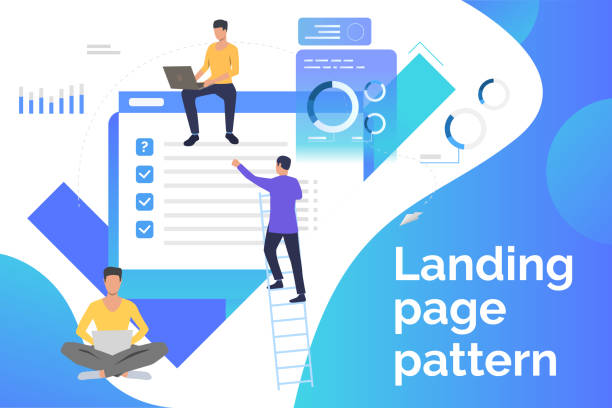
As comprehensively discussed in this explanatory and guidance article, fast website design is a fundamental factor for success in the online world.
From improving user experience and increasing conversion rates to achieving higher rankings in search engines, website speed plays a vital role.
This is not only a competitive advantage but also the standard expectation of modern users from websites.
Ignoring speed can mean losing business opportunities and a decline in market position.
To ensure your website remains fast and efficient, here are some practical and key steps:
- Continuous evaluation: Regularly check your website’s speed with tools like PageSpeed Insights or GTmetrix.
- Optimize images and media: Use compression tools and serve images in modern formats like WebP.
Don’t forget Lazy Loading. - Enable caching: Utilize caching plugins (for CMSs) or server-side cache configuration to increase the reload speed of pages.
- Optimize site codes: Minify and Combine CSS and JavaScript files, and eliminate render-blocking codes.
- Choose strong hosting: Be careful in selecting your web hosting provider and upgrade to VPS or Cloud Hosting if needed.
- Use a CDN: For sites with a global audience or high traffic, a CDN is a necessity.
- Clean and optimize the database: Removing unnecessary information and optimizing queries helps with response speed.
- Optimize the website for mobile: Responsive design and Mobile-First is a fundamental principle.
By implementing these specialized steps and continuously adhering to them, you can ensure that your website will be a prime example of fast and efficient website design, not only today but also in the future.
Website speed is the key to sustained success in the digital space.
Frequently Asked Questions
| Question | Answer |
|---|---|
| What is fast website design? | It refers to the process of building a website with high loading speed and optimized for excellent performance. |
| Why is site speed important? | Site speed directly impacts user experience, conversion rates, SEO, and search engine ranking. |
| What are the factors affecting site speed? | Image size, optimized coding, use of CDN, caching, suitable hosting choice, and number of plugins. |
| How can site loading speed be increased? | Optimizing images, compressing files (CSS, JS, HTML), using browser caching, reducing redirects, and using a CDN. |
| What is CDN and how does it help site speed? | Content Delivery Network, which stores your site’s content on various geographical servers and serves it from the closest server to the user. |
| What is the role of hosting in site speed? | The quality and type of hosting (shared, VPS, dedicated) greatly affect server response time and consequently, site loading speed. |
| Does using too many plugins reduce site speed? | Yes, each plugin loads additional codes that can lead to site slowness. Opting for optimized and essential plugins is recommended. |
| How to optimize images for increased site speed? | Compressing images without quality loss, using modern formats (WebP), setting correct dimensions, and Lazy Loading. |
| How does Caching help site speed? | Caching helps temporarily store site content in the user’s browser or server so that the site loads faster on subsequent visits. |
| What are the best tools for checking site speed? | Google PageSpeed Insights, GTmetrix, and Pingdom Tools are among the common and useful tools for analyzing and improving site speed. |
And other advertising services by Rasaweb Advertising Agency in the field of advertising
The role of advertisements in increasing commercial investments for pet supplies
Examining the impact of multi-channel advertising on pet supplies sales
Advertorials for pet supply sellers on reputable classified websites
Strategies to increase sales with advertorials on classified websites
Key tips for creating engaging content in pet supplies advertorials
And over hundreds of other services in the field of internet advertising, advertising consultation, and organizational solutions
Internet Advertising | Advertising Strategy | Advertorial
💡 For a major leap in the digital world and to reach the peak of success, Rasaweb Afarin Digital Marketing Agency smooths the path of your business growth by offering comprehensive services including multilingual website design, professional SEO, social media management, and targeted advertising campaigns.
📍 Tehran, Mirdamad Street, next to Bank Markazi, Southern Kazeroon Alley, Ramin Alley, No. 6




